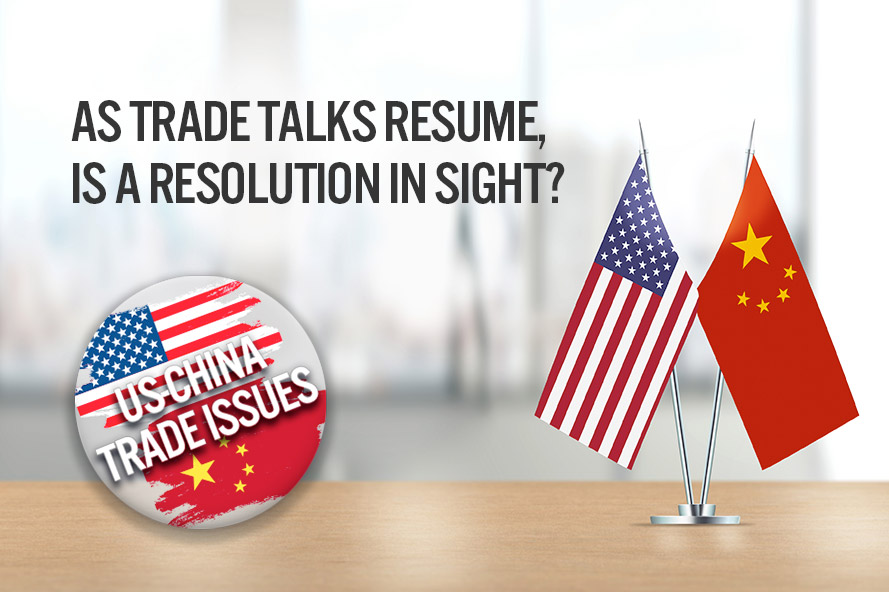
DIpil Das
We continue our weekly coverage of the US-China tariff issue with a focus on recent developments in agriculture.
Recent Developments
A June 18 phone call between US President Donald Trump and Chinese President Xi Jinping to discuss a meeting during the G20 summit gave hope for a resolution, especially after the meeting happened on June 29, resulting in an apparent cease-fire and resumption of trade talks.
Under the terms of the cease fire, the countries agreed:
 Imported beef from Australia, imported pork and seafood in Aldi, Shanghai
Imported beef from Australia, imported pork and seafood in Aldi, Shanghai
Source: Coresight Research [/caption] Yang Yang, Vice President of China Huayang Economic and Trade Group, a large state-owned company, told Coresight Research that demand for high-quality food is on the rise in China, especially for imported premium grass-feed beef, chicken, grains and fruits. The Chinese government currently subsidizes trading companies that import from countries participating in the Belt & Road Initiative, or from countries that have bilateral trade agreements with China. Not only could US agricultural exporters lose sales during the trade dispute, they could lose the market altogether as other countries step in the fill the need. For example, in December 2018, China and Argentina reached a bilateral trade agreement and signed 30 agriculture and investment deals. China is the number one market for Argentine agricultural products and Argentina send half of its beef exports to China. Negotiations on exporting Argentine mutton, cherries and honey to China were expedited as well. At the same time, China has cut tariffs on agricultural products from other countries: So as US products become more expensive, those from other countries are getting cheaper. On average, it is now 14% cheaper to buy imports from Canada, Japan, Brazil or Europe than it is to buy from the US. The challenge is that as more time passes, the damage to US exporters could become more difficult to reverse. “Trump’s tariffs might be a time-limited event, but the change in trading patterns they prompted for China may persist long after the trade war is over,” said Alfred Evans, founder and CEO of Islan Investments speaking to Business Insider.
- No additional tariffs on the $300 billion worth of Chinese goods that had been identified as the target for additional tariffs.
- No additional tariffs on the $250 billion of imports from China already subject to a 25% tariff.
- The US stance on Huawei may soften: US president Trump said at the G20 press conference that US companies can continue to sell to Huawei “where there is no great national emergency problem.” However, it remains unclear whether the existing ban will be reversed.
- Purchase of US agricultural products: According to Bloomberg, China may consider increasing its purchases of US agricultural products, such as soybeans, pork and corn – but qualified that the total volume will depend the progress of trade talks. According to the US Department of Agriculture, on June 28 China agreed to pay $200 million for 544,000 tons of sybeans, a day before the Xi-Trump meeting.
 Imported beef from Australia, imported pork and seafood in Aldi, Shanghai
Imported beef from Australia, imported pork and seafood in Aldi, Shanghai Source: Coresight Research [/caption] Yang Yang, Vice President of China Huayang Economic and Trade Group, a large state-owned company, told Coresight Research that demand for high-quality food is on the rise in China, especially for imported premium grass-feed beef, chicken, grains and fruits. The Chinese government currently subsidizes trading companies that import from countries participating in the Belt & Road Initiative, or from countries that have bilateral trade agreements with China. Not only could US agricultural exporters lose sales during the trade dispute, they could lose the market altogether as other countries step in the fill the need. For example, in December 2018, China and Argentina reached a bilateral trade agreement and signed 30 agriculture and investment deals. China is the number one market for Argentine agricultural products and Argentina send half of its beef exports to China. Negotiations on exporting Argentine mutton, cherries and honey to China were expedited as well. At the same time, China has cut tariffs on agricultural products from other countries: So as US products become more expensive, those from other countries are getting cheaper. On average, it is now 14% cheaper to buy imports from Canada, Japan, Brazil or Europe than it is to buy from the US. The challenge is that as more time passes, the damage to US exporters could become more difficult to reverse. “Trump’s tariffs might be a time-limited event, but the change in trading patterns they prompted for China may persist long after the trade war is over,” said Alfred Evans, founder and CEO of Islan Investments speaking to Business Insider.